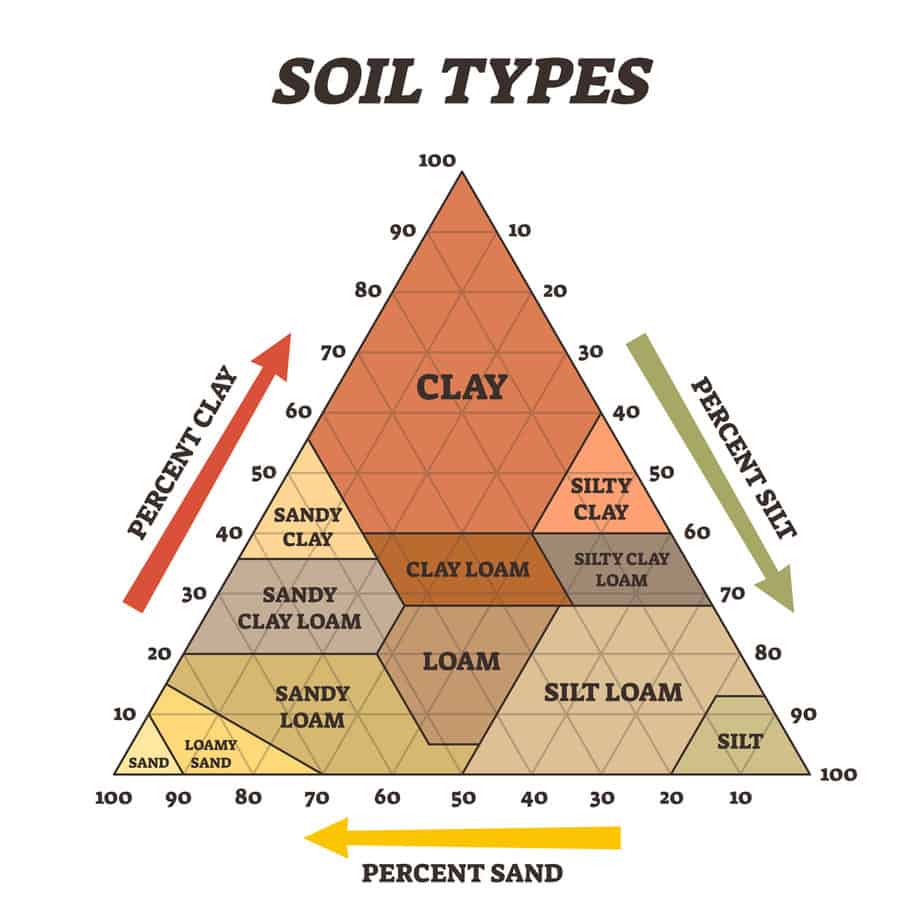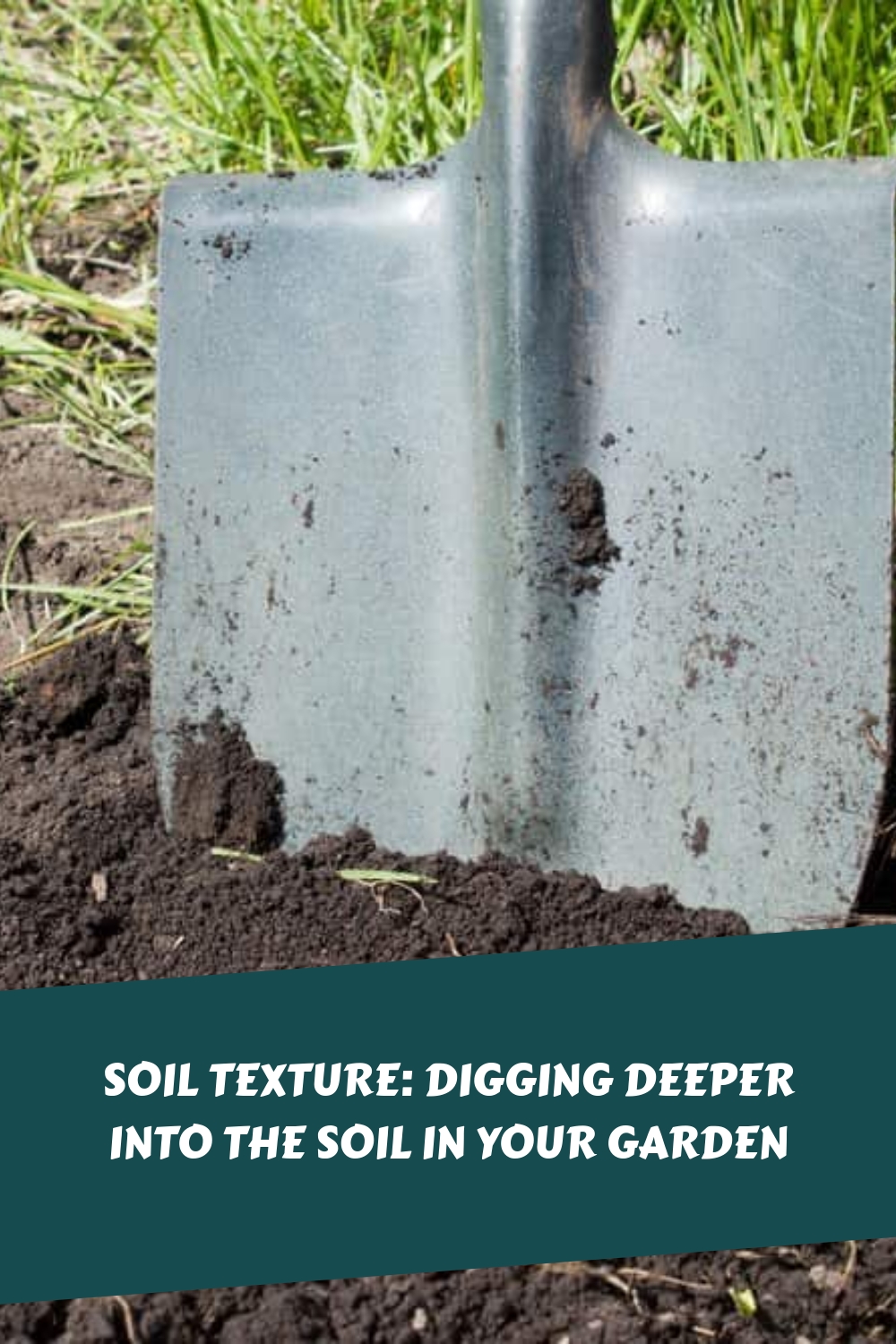It ’s heavy to overstate how important it is for gardeners to understand the soil in their garden . The soil dictate the kind of plants that you may develop and has a Brobdingnagian bearing on how well your plant will uprise once you have selected them .
As indicated in ourintroduction to garden soil , perhaps the two most important characteristic of ground that you need to realize are dirt texture and filth structure . Here I dig a snatch more deeply into the subject of soil grain .
What is soil texture?
Soil texture is the key characteristic that can alter between grunge in unlike place . When we talk about grime grain we are concerned with the mineral particles in the land and in particular with the relative proportions of Henry Clay , silt and sand .
Soil texturecan be draw as a being on sequence from backbone through loam to clay . Thus the grain of an individual soil will be determined by the respective amount of Henry Clay and sand depicted object .
The rationality that the different mineralsoil particlesaffect soil grain is mainly because of their comparative remainder in size .

Sand particles are in general considered to be between 0.05 and 2.0 millimeter in diameter , silt particles are 0.002 to 0.05 millimeter and the Great Compromiser particles are below 0.002 mm .
Thus , clay particles are C of time smaller than sand particles .
Soil grain also identify how soil feels to the touch and how it feel when it is work out with prick .

We tend to talk about territory in terms of its weight , whether it is heavy or faint . A light soil is one that is well worked , id est easy to dig or ramify over .
A light grunge will be a flaxen or silty ground . A large soil is one which is much harder to work . Heavy dirt are overlook by clay .
You will also hear soils talk over in terms of whether they are coarse or fine textured .

Sandy ground are rough-cut because they are dominated by the relatively prominent particles of sand . dirt which are more finely texturedare compose of more silt and clay particles .
Soil texture classes
It is utilitarian for grease scientists and even for gardener to be able-bodied to draw soil texture accurately . Therefore various more often than not accepted soil grain class have been introduced .
These are the most unremarkably recognised course , list according to whether they fall under the heading of sands , loam or remains and then number in purchase order of increasing silt and corpse content :
Sands
SandLoamy sandClayey sand
Loams
Sandy loamFine flaxen loamLoamSilty loamSandy stiff loamClay loam
Clays
Sandy clayLight clayMedium clayHeavy corpse
You might enquire what the difference of opinion is between , for example and loamy sand and a arenaceous loam . The answer is that it is the 2nd word of these descriptions that provides the basic machine characteristic of the soil . So , in this illustration a loamy Baroness Dudevant is more moxie than loam , whereas a sandlike loam is more loam than sand .
Soil texture triangle
In a separate poston dirt texture analysis , I show you how you’re able to do your own run to work out which variety of soil texture you have .
It is also possible to work out your soil grain class if you know the percentage of clay , sand and silt up in your grime , using the soil trilateral below .
you may endeavor to work out the percentages as follows . Take a a sample distribution of dirt and bit by bit wet it . While fret it between your fingers , you’re able to endeavor to estimate the percentage of backbone , silt and clay according to how mealy or embarrassing the sample feels .

I must say , I find this quite hard to do , which is why I usethe method acting described here . But , you only require to know two of the percentages , as the other can be see by deduct from 100 . For instance if you cognize or estimate your soil is 30 % sand and 40 % mud , the silt content will be 30 % .
The soil grain triangle tell us that soil with those proportions of gumption , clay and silt is a clay loam .
Characteristics of sandy soils
Sandy soil is open coarse-textured because of the relatively large size of the George Sand particles that dominate arenaceous soils .
This stand for that rain water easily drains through arenaceous soils , so they are not prone to water - logging . The capable texture also means that it is easy for ascendent to interpenetrate sandy soils .
The easy drainage also means that sandlike soils dry out promptly and can also miss nutrients . The water draining through the grease dissolves nutrients and these can therefore be ‘ leached ’ away from the plant roots as the H2O flows through the soil and away .

Characteristics of clay soils
As we have seen , clay particle are tiny . They are also shaped like saucer . This means that they each have a relatively large surface area and they can pack tightly together .
In praxis these characteristic entail that Henry Clay dirt , when tight , declare urine ( and nutrients ) well . But the tight packing material of the particles mean that water can find it heavy to penetrate mud soils in the first post . Hence , we see puddling .
It also means that roots can find it hard to penetrate clay soils .

As gardener , we should keep off mould corpse soils when they are very wet as we risk compacting them further , so that they become completely inhospitable to plants .
Characteristics of loam soils
Loam soils are the good soils that nurseryman can hope for . They settle somewere between sandy and remains grunge .
Therefore , they have enough mud to hold essential water and nutrient , but enough sand to allow for right drainage .
Can you change soil texture?
As nurseryman we often talk about improving our soil , for example by adding constituent matter , compostor fertilisers .
These improver can indeed improve thesoil structureas well as certain equipment characteristic of the stain such as its fertility or its water belongings capacity , but thesoil textureitself will not be altered . This is because this kind of improvement does not add to or subtract from the mineral ( sand , silt , clay ) message of the soil .
It is possible in some case to exchange land texture at a particular site by adding significant quantity of differently textured filth to what is already in plaza .

But this does not really work when it come to any attempts to increase the sand content of mud filth .
This is because , as designate , grain is prescribe by the relative proportion of the mineral particle . Because cadaver particles are so many time little than guts speck , it is virtually inconceivable , at least in a garden office , to add sufficient sand to strike therelative proportionsof clay to sand particle . Therefore , the grain remains insensible .
Why does soil texture matter?
Why do you want to know the grain of the ground in garden with any degree of precision ?
The honest answer is that you likely do n’t need to know down to the fine detail . Whether your grunge is a silty loam or sandlike clay loam is not go to matter much to you , because those soils are quite standardized as they are next to each other in the power structure .
However , it will repay you to know whether your stain is sandy , loamy or clayey , because the deviation between these broad classes are stigmatise and sham how we need to work with them asgardeners .

As we have seen , the key differences is drain and , in this context , drainage is as much about air as it is about water . industrial plant roots ( except for those of plants especially adapted to live in H2O or boggy condition ) require air travel as well as water .
Therefore , if soil is continually waterlogged the roots ‘ drown ’ and the plant dies .
If , however , water can debilitate away through the dirt , the the space between the soil particles can re - fill with air , providing the oxygenation that is need .

Importantly , although we can not technically switch soil grain . We can improve its structure by digging in organic matter , because constitutional thing has the ostensibly out of the question character of being able to improve water keeping capacity ( and thus fertility ) in sandy soils and improving drain and thus aeration in heavy stiff grunge .
References
Other Garden Soil Resources
Continue ReadingHow to improve garden soil wellness for thrive plants
keep ReadingHow to start compost : turn scraps into garden amber
keep ReadingSoil texture depth psychology : what form of soil do you have ?

Continue ReadingGarden territory : a gardener ’s guide
Martin Cole has been an greedy plant devotee and gardener for more than 20 class and loves to talk and write about horticulture . In 2006 he was a finalist in the BBC Gardener of the Year competition . He is a phallus of the National dahlia Society .
He antecedently lived in London and Sydney , Australia , where he fill a diploma course in Horticultural subject field and is now based in North Berwick in Scotland . He founded GardeningStepbyStep.com in 2012 . The website is aimed at everybody who loves plants or has been bitten by the horticulture bug and wants to know more .

Gardening Step by Step has beencited by Thompson and Morgan , the UK ’s largest mail parliamentary procedure plant retail merchant , as a site that publishes expert horticulture contentedness .

























